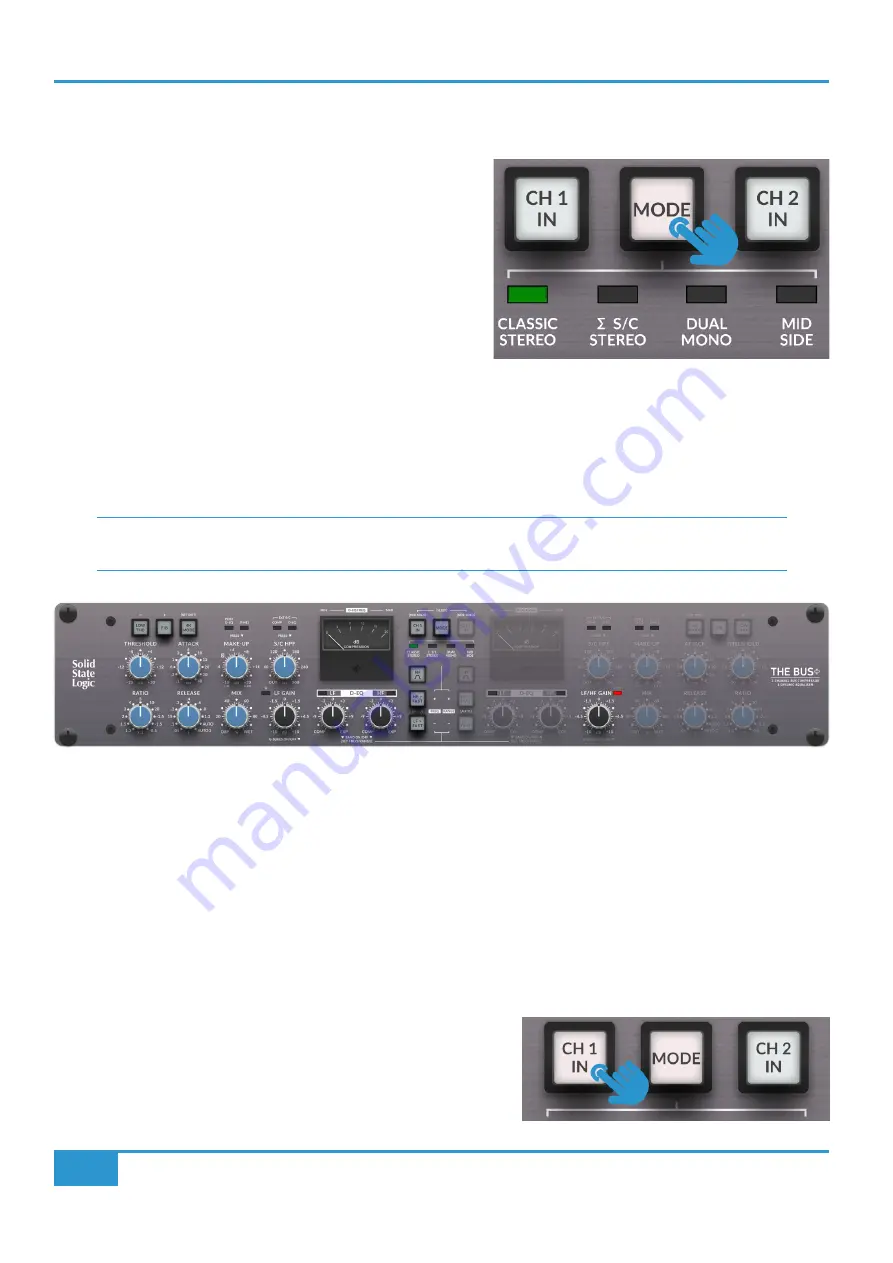
Tutorial
8
THE BUS+ User Guide
Tutorial
MODE Selection
The Bus+ has four different modes of operation to choose from.
Pressing the
MODE
switch will move you through the options.
CLASSIC STEREO
- This is the classic mode of operation for the SSL
Bus Compressor. Designed to be used on stereo sources, the controls
on the left-hand side of the unit determine the settings of both left
and right channels. The right hand controls are disabled and have no
function associated to them in this mode (with the exception of the
LF
/
HF GAIN
D-EQ control).
�
S/C STEREO
- An alternative stereo mode of operation. The controls on the left-hand side of the unit determine the settings
of both left and right channels. In this mode, the left and right side-chain signals are summed together, as opposed to being
individually rectified. The effect of this is that the Bus Compressor becomes 'more sensitive' towards mono content in a stereo
source - typically instruments like kick, snare, bass. Have a go at switching between
CLASSIC STEREO
and
�
S/C STEREO
to
see which you prefer on the material you're compressing.
A short press and hold on the MODE switch allows you to 'go backwards' through the modes, useful for A/B'ing
between two adjacent options.
DUAL MONO
- This mode configures the Bus Compressor as two entirely independent mono processing engines. The controls
on the left-hand side determine the settings for channel 1 and the right-hand side controls determine the settings for channel 2.
MID SIDE
- The Bus+ has built-in Mid-Side encode-decode circuitry that allows the left-hand side of the unit to process the 'Mid'
signal and the right side of the unit to process the 'Side' signal. This mode is a great tool for Mastering engineers.
CH 1 IN and CH 2 IN Switches
These switches allow you to bypass all Bus Compressor and D-EQ
processing. In stereo modes, the
CH 2
switch is disabled as
CH 1
controls
both left and right channels.
In CLASSIC STEREO or �S/C STEREO, the right-hand side LF/HF GAIN control functions as the
High Frequency
Gain control
for both left and right (linked) channels. This is indicated by the red LED that accompanies the control (see illustration above).
In DUAL MONO or MID SIDE mode, the right-hand side LF/HF GAIN control functions as the
Low Frequency
Gain control for
Channel 2. This means that HF GAIN is only accessible in CLASSIC STEREO or �S/C STEREO modes.









































